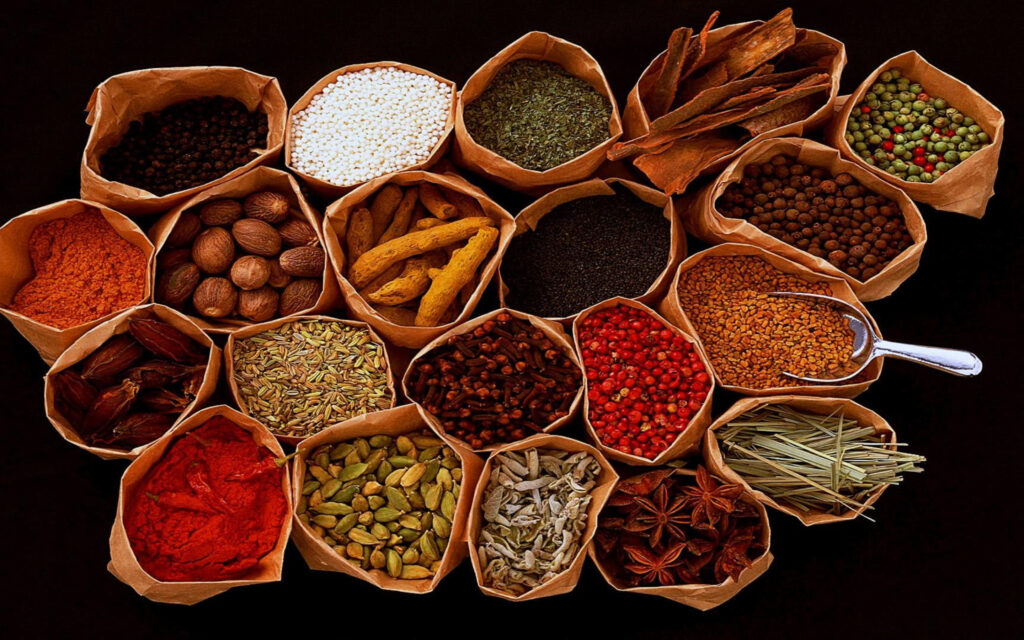Indonesia is known as a country with abundant spices. So abundant, during the colonial era, various countries in the world were ambitious and hunted to control the spices in Indonesia.
It makes sense, because at that time spices were one of the commodities with high economic value. In fact, during the colonial era, typical Indonesian spices had a higher selling value than gold.
Until now, typical Indonesian spices are still popular and attract the world’s attention. This is proven by the high number of typical Indonesian spice products that are widely exported to various countries, such as pepper, cloves, nutmeg, and cinnamon.
According to data from Katadata, spice exports in Indonesia in January-April 2020 reached US$218.69 million, or an increase of 19.28% compared to the same period in the previous year. Not only that, according to data from the Food and Agriculture Organization (FAO), in 2016 Indonesia was ranked 4th as a spice producing country in the world!
So, what typical Indonesian spices are the most exported? Here are some of them:
Pepper
This spice plant, which is widely distributed in Sumatra, Kalimantan, Sulawesi, and West Nusa Tenggara, is Indonesia’s main spice commodity. According to data from the Ministry of Trade, in the first quarter of 2020, pepper controlled a total of 18.7% of Indonesia’s total spice exports. With an export value reaching 40.88 million US dollars. Pepper is often used as a seasoning in making soups and various stir-fries, which can provide a warming effect on the body.
Clove
Cloves are a native spice from Maluku that were highly sought after by colonizers. This is because during the colonial period, cloves were one of the most popular spices and had a high price. Clove-producing areas in Indonesia include: East Java, Maluku, Sulawesi Island, East Kalimantan, and East Nusa Tenggara. According to data from January-April 2020, cloves are the most exported spice after pepper with a value of 37.26 million US dollars.
Cinnamon
Often used as an addition to bread, cinnamon is an Indonesian spice that is widely exported. This spice plant with a distinctive aroma is widely found in Kerinci Regency and Merangin Regency, Jambi. Interestingly, it turns out that this spice from Jambi can supply up to 45% of the world’s cinnamon needs. Some countries that are the destinations for cinnamon exports are Singapore, Germany, the Netherlands, and the United States.
Vanilla
Rarely known, vanilla is also a typical Indonesian spice plant that is widely exported abroad. No kidding, Indonesia is even one of the best and largest vanilla exporters and producers in the world, after Madagascar and France based on data in 2019. Currently, there are many regions in Indonesia that cultivate vanilla, including: East Java, Central Java, Lampung, and East Nusa Tenggara.
Cardamom
No less interesting, this small round spice typical of Indonesia is also exported abroad. Based on data from the Agricultural Quarantine Agency, in the first quarter of 2020, cardamom exports from North Sumatra increased by 54.2% compared to the previous year. At least, until now there have been three main countries importing cardamom from North Sumatra, namely Vietnam, Thailand, and China.
Andaliman
The next typical Indonesian spice that is widely exported abroad is andaliman. Andaliman is a spice that has a fairly spicy taste like pepper, has an aroma similar to citrus but softer, and is used as a mixture in typical Batak cuisine. Although still a little foreign, andaliman’s popularity in the culinary world is increasing rapidly. According to data from the Ministry of Agriculture, this typical North Sumatra spice was successfully exported to Germany as much as 574 kg, with a value of IDR 431 million
Pala/Nutmeg
Another typical Indonesian spice that is widely exported abroad is nutmeg. According to data from January to April 2020, the value of whole nutmeg reached 26.47 million US dollars, and nutmeg powder was 7.04 million US dollars. Interestingly, in addition to being a spice, the typical Banda and Maluku plant is also a commodity that produces essential oils. No less, in 2016 nutmeg became the third largest typical Indonesian spice commodity.

